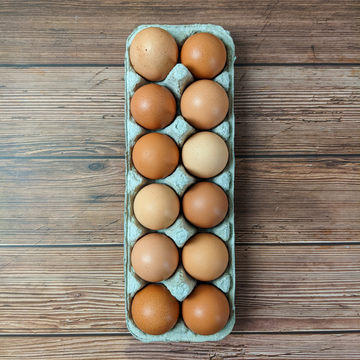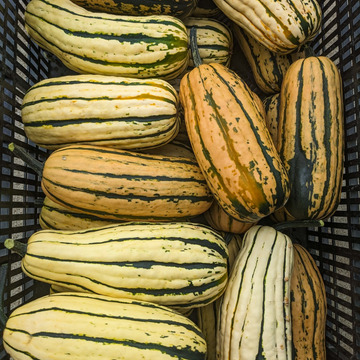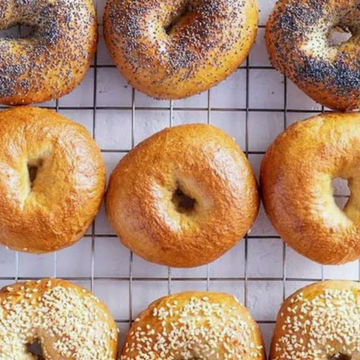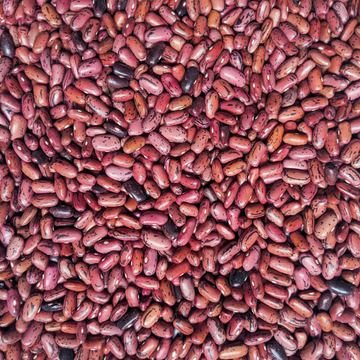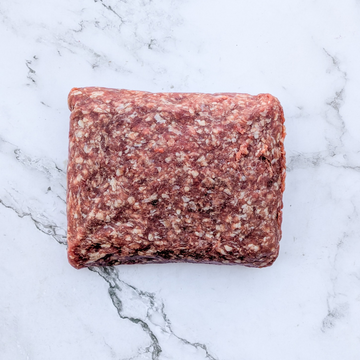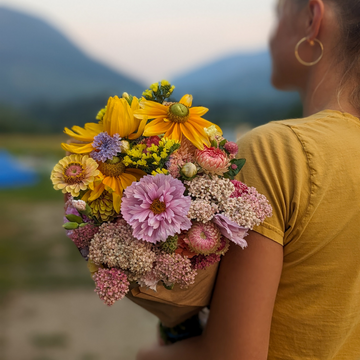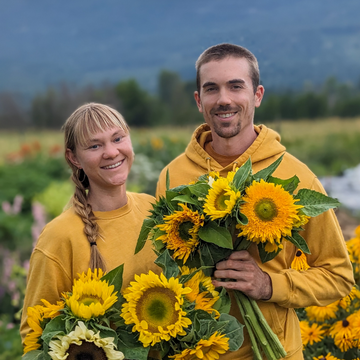
What style of farming do you practice?
We are a Regenerative No-Till farm. Our focus is on regenerating and building healthy soil year after year. Besides a one-time tilling to open up our new field, we try to disturb the soil as little as possible, so we don't use a tractor and instead use hand tools.
Are you certified organic?
We are not certified organic. Our farming practices go above and beyond the organic standards. We've decided to show our customers how we farm rather than pay a third-party organization whose standards don't match up to our own.
Do you use pesticides or herbicides?
Absolute not! We don't even use naturally-derived pesticides and herbicides that are approved under organic standards. We believe that if we take care of our soil and help to balance the ecosystem on our farm, there is no need for pesticides or herbicides.
How do you take care of your soil?
There is a 4 step process that we follow to ensure maximum soil health. They are:
1. Disturb the soil as little as possible
In most situations, disturbing soil by tilling it with a tractor is a harmful practice in the long run. It causes erosion which can stripe away vital top soil. It kills the delicate microorganisms in the soil by exposing them to sunlight and oxygen. And it can bury weed seeds which will sprout and outcompete your vegetables.
Tilling also destroys the soil structure. Healthy soil structure is created over time as worm and bugs work their way through the soil. These tiny creatures create tunnels and pockets which make it easier for other bugs to travel in the soil. Those tunnels also allow oxygen and carbon dioxide to more easily move through the soil. And finally, it captures more water and allows it to gently filter into into the aquifers deep below the surface. When we use a tractor to till the soil it's akin to running a wrecking ball through the soil structure. The heavy tractor also creates soil compaction. When the soil has no structure and is compacted, it doesn't hold water as well and all of the little creatures in the soil aren't able to move around and thrive.
2. Keep the soil covered as much as possible.
We want to keep the soil covered because if it's exposed to sun and wind it will dry up and erode, harming the microorganisms in the soil. To keep the soil covered, we use straw mulches, intensive planting, and compost. This helps to keep the soil moist, reduces water usage, and provides a more advantageous habitat for microorganisms.
3. Keep it planted as much as possible
Plants secrete root exudates which is a fancy word for soil food. The more plants that you have growing, the more food there will be for the microorganisms in the soil and the healthier your soil will become. To accomplish this, we plant unused beds with a cover crop, such as winter rye. We plant crops such as lettuce and scallions together to fill in any unused places - this is know as "interplanting". And finally, we allow 'weeds' to grow in areas where they are harmless.
How do you manage weeds?
We manage weeds with a variety of methods. The first method is the good ol' fashion way - with our hands and a hoe! We also use landscape fabrics, silage tarps, and hay mulch to cover bare soil to prevent weeds from sprouting up. We also use a technique called solarizing. Solarizing is when you lay a clear piece of plastic over a bed. The clear plastic will cook the weeds in the hot summer sun, allowing us to quickly turn over a bed without removing any plant matter and without much labor.
How do you manage insect pressure?
The best way to manage pests is to maximize our soil health. Healthy soil will grow plants that are more pest resistant. However, this can take many years to accomplish. In the meantime, we use insect nets, which are thin white meshes that allow sunlight, water and air in, but not bugs. We rotate where certain crops are planted each year, which is known as crop rotation. This makes it more difficult for pests to find and infest those crops. We plant specific plants that attract beneficial insects that will prey on pest insects. And lastly, we squish pest insects by hand every once in a while (sorry guys!).
Where do you get your seeds from?
We get our seeds from a variety of different places. Some of the seed companies are small and up-and-coming, while others are large and well established. We always try to use organic seeds when possible, however some varieties aren’t always available as certified organic. They may have been grown organically, just not certified.
Who provides the labor for your farm?
The two of us provide the majority of labor on the farm. During the busier times of the year we’ve done work trades with friends. They provide us with labor and in exchange we give them $18 an hour worth of farm credits to our online farm store. Once we become more established and need full-time help, we will move to paying our employees a living wage.
What fertilizers and amendments do you use?
All of the amendments we use are certified organic or approved for organic use and we source locally whenever possible. Here is a list of what we use and why.
Compost. We use a high-quality, certified organic compost sourced from Abbotsford. It's an Agrologist formulated blend made from chicken manure, steer manure, mushroom substrate and straw mulch.
Glacial Rock Dust. Mined from a piedmont glacial moraine in British Columbia Canada, glacial rock dust is a natural mineral product containing a broad spectrum of minerals and micronutrients. We use glacial rock dust on most of our beds because it provides many of the trace minerals that plants need to grow.
Azomite. Azomite is a natural mineral substance which is mined in Utah from an ancient deposit left by a volcanic eruption that filled a small seabed an estimated 30 million years ago. We use it on a lot of our beds and in our seed starting mix because it is high in essential trace minerals.
Kelp Meal. Kelp meal is made from dried ocean seaweed that is then ground up into a meal. The Kelp meal that we used is sourced from the East Coast of Canada. We use Kelp Meal on our beds for its high micronutrient content.
Organic Feather Meal. Feather meal is essentially dried, ground up feathers that are collected from poultry that have been harvested for meat. We use feather meal on a lot of our beds for its high nitrogen content, which is essential for optimal plant growth.
Organic Gaia 4-4-4 Balanced Fertilizer. Gaia is made from alfalfa meal, bone meal, blood meal, glacial rock dust, mined potassium sulphate, fossilized carbon complex, rock phosphate, greensand, kelp meal, and gypsum. We use Gaia in our seed starting mix.
Sunshine #4 Organic Potting Soil. We use Sunshine #4 potting soil in our seed starting mix.
Alfalfa. We source local, organically-grown but not certified alfalfa and use it as mulch and organic matter for the soil.
If you have any questions about how we farm we encourage you to ask! The more we know about how our food is being grown the better. Simply send your questions to emily@confluencefarms.ca
